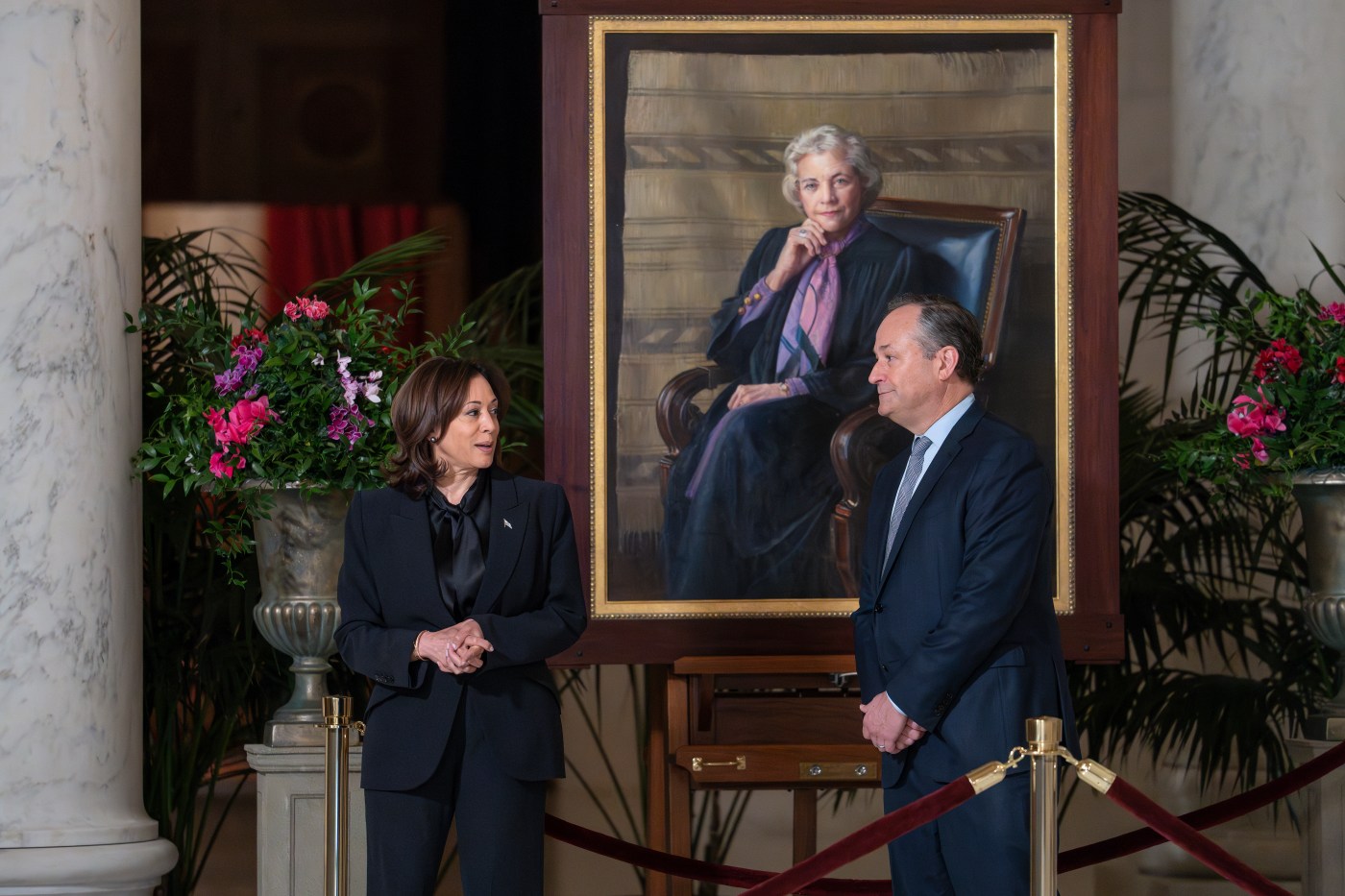
Sandra Day O’Connor honored as a trailblazer
WASHINGTON — Justice Sandra Day O’Connor, the first woman to serve on the U.S. Supreme Court, was remembered Monday as a trailblazer who never lost sight of how the high court’s decisions affected all Americans.
O’Connor, an Arizona native who was an unwavering voice of moderate conservatism for more than two decades, died Dec. 1 at age 93. Mourners at the court on Monday included Vice President Kamala Harris, the first woman to serve in her role, and her husband Doug Emhoff.
Supreme Court Justice Sonia Sotomayor spoke at a private ceremony that included the nine justices and retired Justice Anthony Kennedy, as well as O’Connor’s family and court colleagues.
“She would often say, ‘It was good to be the first, but I don’t want to be the last,’” Sotomayor said of O’Connor’s distinction as the first woman. She lived to see a record four women serving on the high court.
“For the four us, and for so many others of every background and aspiration, Sandra was a living example that women could take on any challenge, could more than hold their own in any spaces dominated by men and could do so with grace,” Sotomayor said.
O’Connor’s body lay in repose after her casket was carried up the court steps with her seven grandchildren serving as honorary pallbearers. It passed under the iconic words engraved on the pediment, “Equal Justice Under Law,” before being placed in the court’s Great Hall for the public to pay their respects.
Funeral services are set for Tuesday at Washington National Cathedral, where President Joe Biden and Chief Justice John Roberts are scheduled to speak.
O’Connor was nominated in 1981 by President Ronald Reagan and confirmed by the Senate, ending 191 years of male exclusivity on the high court. A rancher’s daughter who was largely unknown on the national scene until her appointment, she received more letters than any other member in the court’s history in her first year and would come to be referred to by commentators as the nation’s most powerful woman.
O’Connor had “an extraordinary understanding of the American people,” and never lost sight of how high court rulings affected ordinary Americans, Sotomayor said.
She was also instrumental in bringing the justices together with regular lunches, barbecues and trips to the theater. “She understood that personal relationships are critical to working together,” the justice said.
O’Connor wielded considerable influence on the nine-member court, generally favoring states in disputes with the federal government and often siding with police when they faced claims of violating people’s rights. Her impact could perhaps best be seen, though, on the court’s rulings on abortion. She twice helped form the majority in decisions that upheld and reaffirmed Roe v. Wade, the decision that said women have a constitutional right to abortion.
Thirty years after that decision, a more conservative court overturned Roe, and the opinion was written by the man who took her place, Justice Samuel Alito.


